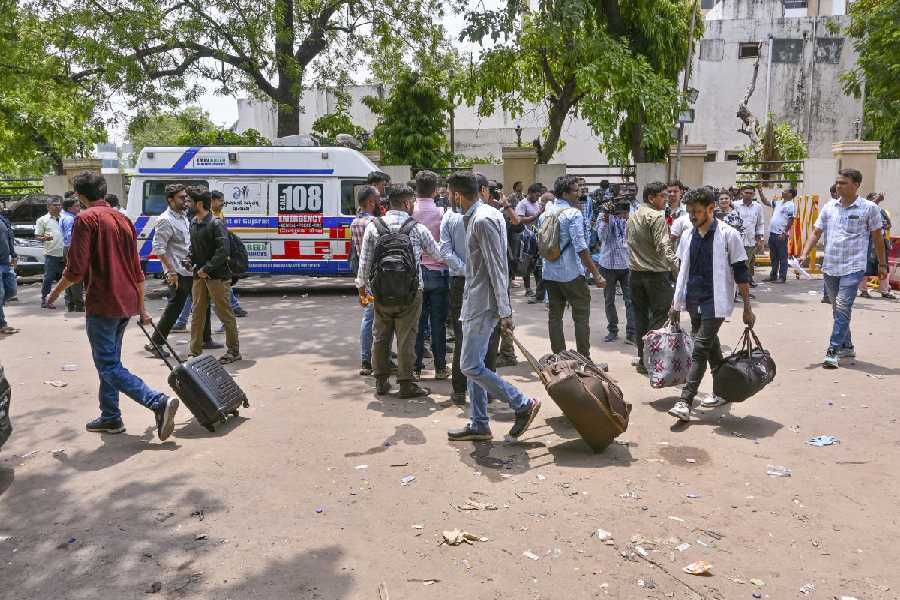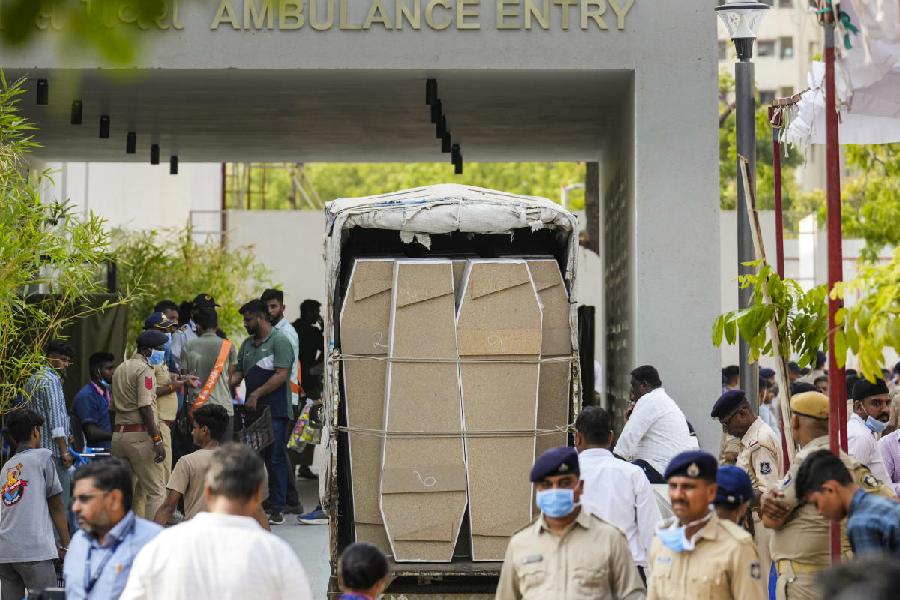|
|
| Still delivering |
?Sesquicentenary? is quite a mouthful. That?s what the post offices are celebrating now ? 150 years of existence, courtesy of Lord Dalhousie?s Post Office Act of 1854, predating the Indian Post Office Act of 1898. India has 155,618 post offices, out of a global figure of 650,000. That?s a 23.9 per cent share, more than India?s share in global population. Restructuring of post offices is an issue not only in Japan, but also in India. And restructuring is partly driven by a fiscal agenda, since there is an annual loss of Rs 1,500 crore. 566,000 employees ? including the gramin dak sevaks, who are employed part-time ? mean that 90 per cent of expenditure is on salaries, pensions, rent, electricity and administrative expenses, especially after the fifth pay commission. Today, in metro India, if not in urban India, everything useful comes through courier services. Regular post-office mail, not Speed Post, is reserved for junk. Not that the courier industry is a homogeneous category. The top 20, the organized segment, has a market share of 65 per cent.
Smaller semi-organized players have a market share of 25 per cent and the postal department has a market share of just 10 per cent. That?s for the mail business. The usual response is that post offices cannot handle competition and at a general level, the proposition is indeed true. However, competition in what? A distribution network that has 155,618 post offices, of which 139,081 are in rural areas, and a customer base of 160 million account holders in post-office savings banks are not a joke.
All the banks put together have around 68,000 branches. This is a network that many marketing people will salivate over, to distribute not just financial products, but also other products and services. Rural income and rural consumption expenditure have grown fairly fast in the Nineties (an average rate of 20 per cent) and should continue to do so in the next couple of decades. The post-office network can therefore be used to push fast-moving consumer goods, consumer durables and even inputs like fertilizers and seeds. For that matter, many e-commerce and e-governance initiatives of the Nineties can also tap the synergy of post offices.
If gram panchayat villages already have post offices, many of the other panchayat-driven initiatives need not develop their own independent infrastructure. This becomes especially important because the department of post?s losses are primarily due to the expansion of an unviable rural network. A large number of branch post offices have no traffic worth the name, and continue to be loss-making despite an attempt to push a more diversified portfolio of postal products. One can indeed argue that future expansion should be franchisee-driven and there should be more mobile post offices.
The Tenth Five-Year Plan (2002-07) talks about establishing 5000 panchayat sanchar sewa kendras for future expansion. This is nothing but a franchisee-driven model. However, this argument does not negate the point about using existing infrastructure more efficiently. There is talk of post-office licensing out sales of stamps, stationery and booking of postal articles to shops and traders. While that is fine, why shouldn?t post offices sell what these shops and traders are selling?
Are post offices per se inefficient and uncompetitive and will they become even more so if the monopoly on sending letters conferred by the Indian Post Office Act of 1898 is ever removed? That?s not quite the impression one gathers if one goes back and looks at what preceded the 1854 legislation, before the monopoly began to be conferred in 1837 and 1839. At that time, private delivery of mail also existed. Despite that competition, post offices survived and actually delivered better service.
Notwithstanding dacoits, tigers, snakes, flooded rivers, swamps and snow, there was a reputation for certain delivery, a legacy of which still remains. Even today, the consumer perception is of public-sector apathy to customers and delays, not uncertainty of delivery. The monopoly wasn?t necessary because runners were unable to cope with private-sector competition. If anything, there were reports of the private sector bribing these runners to carry private-sector mail. Subsequently, the low cost of the public post often drove out the private sector, although some survived till 1950 and 1951. The reasons for acquiring a monopoly were largely political. And in addition, there was the equivalent of what today we would call a universal postal service obligation. Many of the private-sector operators were caste-based and therefore, there was no universal access.
In principle, everything can be restructured, provided one has the freedom and the flexibility to do so. Before 1854, salaries were tightly controlled, even for the post master general, and this continued immediately after 1854. You did not have the fifth pay commission, nor did you have a situation where private courier delivery boys were available at a third of the salary paid to a postman. You did not have incremental dearness-allowance costs of 8 per cent a year. Nor did one have gramin dak sewaks clamouring to be regularized as department-of-posts staff. The constraint to restructuring is therefore the government department character, and there is absolutely no reason why India Post should not be corporatized.
In the United States of America, the post office department has become an independent entity, although it continues to be under the executive. In Britain, the provider has now become a public limited company. Independence and autonomy will also mean that tariff fixation will also become independent, perhaps through a postal rate commission. Today, under the 1898 legislation, tariffs are fixed by the government and approved by parliament. As in a host of other areas, if subsidies are necessary, there are better ways of delivering them, instead of low prices across the board. A corporatized department of posts can figure out whether its USP is in the low-value segment or whether it wants to cater to the creamy layer as well. But in the absence of this independence, all the strategic thinking floating around in the name of sesquicentennial celebrations is sheer nonsense.
Here are some pre-1854 quotes to illustrate what was once possible. About runners: ?With them the mail bag is a kind of fetish which must be protected and got to its destination at all costs. Dishonesty among them is almost unknown and they are wonderfully true to their salt.? Or, ?The number of tigers sated with his [the mail runner?s] flesh is past account, the Himalayan snows have overwhelmed him, flooded rivers have carried him off and oozy swamps sucked him down. But in the face of all these dangers, has the runner ever failed to do his duty? According to the stories, never, and in real life, perhaps not more than once or twice.? Or again, ?In the face of all these dangers, the mail runners seldom shrink from performing their duty and no praise can be too high for the honesty, courage and devotion which they display.?
About the private sector: ?That the government dawk runners were willing for a consideration to deliver private letters and in these illicit dealings, we must see the origin of the public post.? And finally, on the poor not being able to afford appropriate user-charges: ?Many of whom could ill afford to spend even the smallest coin, namely one pie, a twelfth part of a penny, on anything that was necessary for their own sustenance.?
Times have changed. Even the poor are now willing to pay for a service, provided the quality of the service is assured. And that?s precisely the reason why the poor are also turning to courier services, of the unorganized and semi-organized variety. Competing with those is really the postal department?s USP. There is plenty in the market, even if one ignores the organized courier segment.











